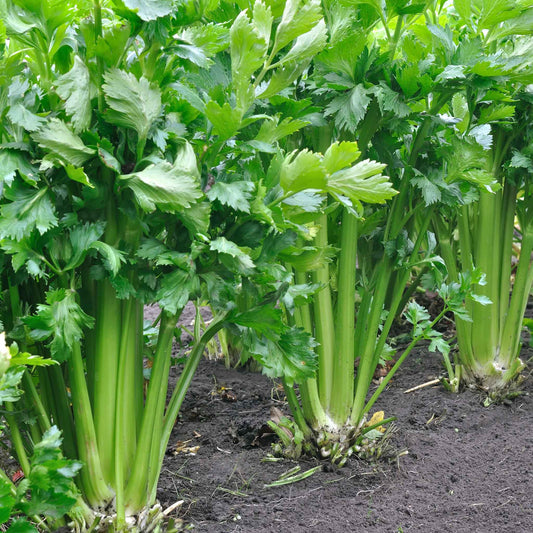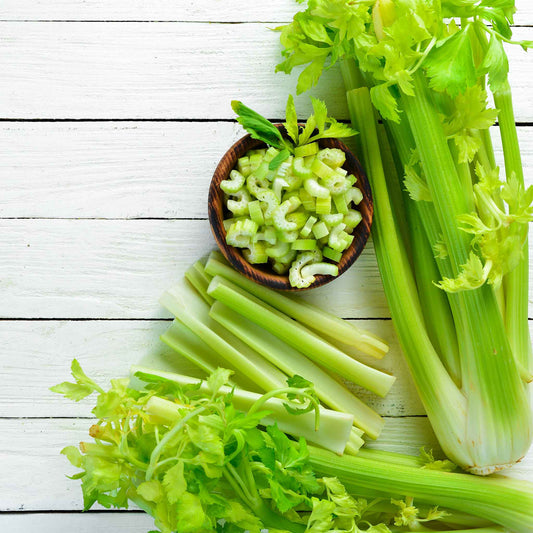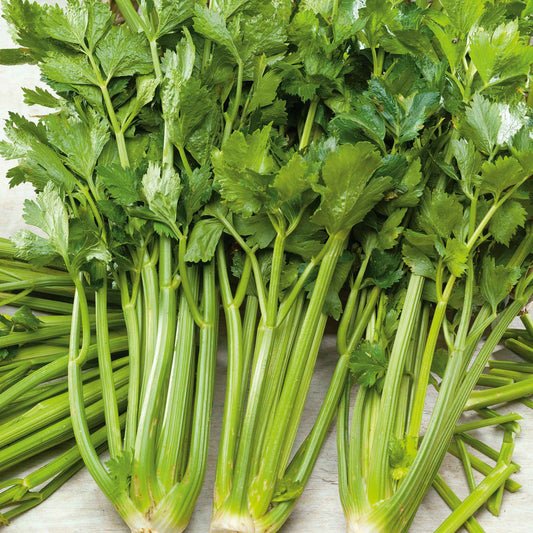-
main-collection-product-grid

Celery Seeds (Organic) - Tall Utah
Provides the perfect celery stick snackCelery Seeds (Organic) - Tall Utah
Provides the perfect celery stick snackRegular price As Low As $6.99Regular priceUnit price per -
main-collection-product-grid

Celery Seeds - Tall Utah 52-70
Foot-long crisp stalks for that perfect crunchCelery Seeds - Tall Utah 52-70
Foot-long crisp stalks for that perfect crunchRegular price As Low As $4.99Regular priceUnit price per -
main-collection-product-grid

Celery Seeds - Pascal
Solid stalks with a rich, nutty flavorCelery Seeds - Pascal
Solid stalks with a rich, nutty flavorRegular price As Low As $4.99Regular priceUnit price per
What we love about planting celery
- Sturdy and disease resistant
- Nutty, earthy flavor
- Simple to grow
- Thrives in full sun conditions
The magic of celery, from treatments to cuisine
Known for centuries to have wide medicinal uses, celery oil and juice extracted from the seeds and stalks have been used to treat everything from joint pain, gout, and hysteria, to nervousness, headaches and weight loss. Along with these treatments, celery is also a culinary powerhouse in cooked or fresh dishes. Wonderfully aromatic with that nutty, earthy flavor, celery is an absolute necessity in soups, stir fries and salads.
Celery is said to have been first grown in the marshes around the Mediterranean Sea and then cultivated by the Greeks around 450 to 600 BC. Today, celery is sold at your local markets and grocery stores, but why not try to plant this crunchy and juicy vegetable in your own garden for convenient home-grown recipes and snacking?
What to know about growing celery from seed
In cooler planting zones start your seeds indoors, using a germination mat, at least eight to ten weeks before the last frost date. In warmer areas, start celery seeds in the fall during warm weather. Celery seeds prefer full sun conditions and rich garden soil. Sow celery seeds in individual pots, with as few seeds as possible in each planting container. Cover lightly with soil, with no more than 1/4 inch of soil. Germination typically takes about 18 days. Be sure to harden seedlings off for seven to ten days before transplanting outdoors. Transplant outdoors after the last frost date and space plants about 12 to 18 inches apart, in rows approximately 24 inches apart.
Add compost and mulch around your celery plants. When stalks are about eight inches tall, harvest from the outside in, taking just a few at a time as celery is considered a cut-and-come-again crop. Cut one to two inches from the ground, trimming any excess leaves and tough, outer stalks. Store celery in the refrigerator or enjoy immediately!
Tips for storing celery
If storing your celery in the refrigerator, do so by submerging the stalks either fully in water or with the tops sticking out. You may also choose to simply wrap the trimmed stalks in a damp towel covered with aluminum foil. Using these techniques will allow your celery stalks to maintain their fresh crunch for up to two to four weeks!
For more information about planting, growing, and caring for celery seed, see the Celery Seeds Planting Guide.


